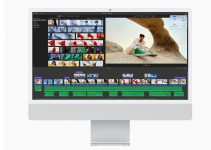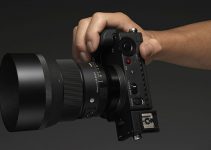Considering the powerful set of tools and assets that come with Resolve 16, it’s no surprise that more and more creative professionals and enthusiasts alike are switching to the platform not only for color grading but for video editing as well. This new user base may come from all the new cameras that Blackmagic Design has sold lately, or it could be that word is spreading about the striking capabilities of Resolve.
Whatever the case, it’s a fact that there’s plenty of new editors in Resolve, the majority of whom need to learn how to use the software from scratch. But who can teach them better than Alex Jordan from LearnColorGrading who has been crushing it with his excellent tutorials and courses over the past few years? In the video below, he covers a couple of new simple tricks that will speed up your editing workflow in no time.
In a previous video that we covered here, Alex provided a helpful tip regarding how your clip selection can follow the playhead while editing. What does it mean? Well, in the timeline menu in Resolve 16 there is a simple option to tick that instantly selects the clip underneath the playhead regardless of its position on the timeline.
That may not seem like a big deal at first. After all, if you need to select a clip, you can simply take the mouse and do whatever you want with it but for all these actions such as moving, deleting or dragging around, you’ll have to use your mouse.
Professional editors are not prone to making such extra movements that may slow them down, and that is not only an old-timer idiosyncrasy, but it’s also a matter of being precise and efficient.
Using keyboard shortcuts makes you quicker, plus you can stay focused on the edit as your fingers move using muscle memory while the conscious flow of thoughts is uninterrupted.
But even without this pompous justification, it’s easy to realize that editing on a keyboard is quicker and way more efficient, that’s why seasoned editors are used to panels. It’s not only because they’re fancy.
So, back to the matter at hand, having the playhead selecting the clips on the fly for you will definitely have a positive impact on your workflow by speeding it up significantly. Keep in mind, though, that this technique applies only for video, not for audio. If you have clips where the audio has not been linked to the video, you can easily fix that as well.
By tapping the chain link icon at the center of the screen, you can link any pair of clips (both video and audio) on your timeline that you’ve selected. Creating groups in this way while editing and moving them around as if they were a single unit could be another incredibly handy technique in many situations. But what if the audio doesn’t belong to any of your video clips. No problem. Simply select the clips, right-click on them and choose Link Clips.
So, there you have it – two simple and easy to apply tricks that could be of use while you practice your knowledge of Resolve. These may seem too basic, but if you start handling bigger projects, you’ll appreciate every second you may gain while using them as the amount of time saved along the way will add up much quicker than you think.
[source: LearnColorGrading]
Disclaimer: As an Amazon Associate partner and participant in B&H and Adorama Affiliate programmes, we earn a small comission from each purchase made through the affiliate links listed above at no additional cost to you.
Claim your copy of DAVINCI RESOLVE - SIMPLIFIED COURSE with 50% off! Get Instant Access!





